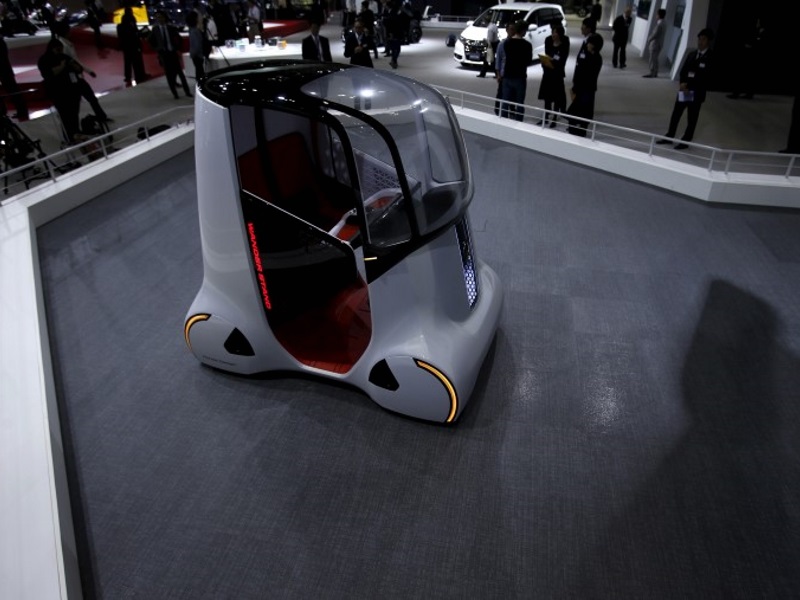- Home
- Science
- Science News
- Google Commissioned Study Finds Self Driving Cars Involved in Fewer Crashes
Google Commissioned Study Finds Self-Driving Cars Involved in Fewer Crashes

The study was commissioned by Alphabet Inc's Google unit, which has reported a series of minor crashes involving its self-driving fleet. It looked only at Google's fleet of more than 50 self-driving cars, which has logged 1.3 million miles in Texas and California in self-driving mode.
The test fleet has reported 17 crashes over the last six years, although none were the fault of the self-driving cars, Google said.
After adjusting for severity and accounting for crashes not reported to police, the study estimated cars with drivers behind the wheel are involved in 4.2 crashes per million miles, versus 3.2 crashes per million miles for self-driving cars in autonomous mode.
Crash rates for conventional vehicles at all severity levels were higher than self-driving crash rates, the study found.
(Also see: Automakers, Not Silicon Valley, Lead in Driverless Car Patents: Study)
A 2015 National Highway Traffic Safety Administration study found about 60 percent of property-damage-only crashes and 24 percent of all injury crashes are not reported to the police.
California law requires all crashes involving self-driving vehicles be reported to police.
Google spokesman Johnny Luu said the company asked Virginia Tech "to look into the topic given the interest and develop a robust methodology to be able to make meaningful comparison between regular cars on the road as well as our self-driving cars."
Luu said the study "will be helpful making apples-to-apples comparisons moving forward."
A study released in October by the University of Michigan Transportation Research Institute compared crash rates among Google, Delphi and Audi self-driving cars in 2013 and found they had a higher rate than for conventional cars.
But that study noted the low volume of driverless miles - 1.2 million compared with 3 trillion miles driven annually on US roads.
In December, California proposed state regulations that would require all autonomous cars to have a steering wheel, throttle and brake pedals when operating on California's public roads. A licensed driver would need to be in the driver's seat ready to take over in the event something went wrong.
Google, eager to demonstrate its vehicles are safe, criticized the proposed rule, which it said would maintain "the same old status quo and falls short on allowing this technology to reach its full potential, while excluding those who need to get around but cannot drive."
© Thomson Reuters 2016
For the latest tech news and reviews, follow Gadgets 360 on X, Facebook, WhatsApp, Threads and Google News. For the latest videos on gadgets and tech, subscribe to our YouTube channel. If you want to know everything about top influencers, follow our in-house Who'sThat360 on Instagram and YouTube.
Related Stories
- Samsung Galaxy Unpacked 2025
- ChatGPT
- Redmi Note 14 Pro+
- iPhone 16
- Apple Vision Pro
- Oneplus 12
- OnePlus Nord CE 3 Lite 5G
- iPhone 13
- Xiaomi 14 Pro
- Oppo Find N3
- Tecno Spark Go (2023)
- Realme V30
- Best Phones Under 25000
- Samsung Galaxy S24 Series
- Cryptocurrency
- iQoo 12
- Samsung Galaxy S24 Ultra
- Giottus
- Samsung Galaxy Z Flip 5
- Apple 'Scary Fast'
- Housefull 5
- GoPro Hero 12 Black Review
- Invincible Season 2
- JioGlass
- HD Ready TV
- Laptop Under 50000
- Smartwatch Under 10000
- Latest Mobile Phones
- Compare Phones
- Moto G15 Power
- Moto G15
- Realme 14x 5G
- Poco M7 Pro 5G
- Poco C75 5G
- Vivo Y300 (China)
- HMD Arc
- Lava Blaze Duo 5G
- Asus Zenbook S 14
- MacBook Pro 16-inch (M4 Max, 2024)
- Honor Pad V9
- Tecno Megapad 11
- Redmi Watch 5
- Huawei Watch Ultimate Design
- Sony 65 Inches Ultra HD (4K) LED Smart TV (KD-65X74L)
- TCL 55 Inches Ultra HD (4K) LED Smart TV (55C61B)
- Sony PlayStation 5 Pro
- Sony PlayStation 5 Slim Digital Edition
- Blue Star 1.5 Ton 3 Star Inverter Split AC (IC318DNUHC)
- Blue Star 1.5 Ton 3 Star Inverter Split AC (IA318VKU)

















